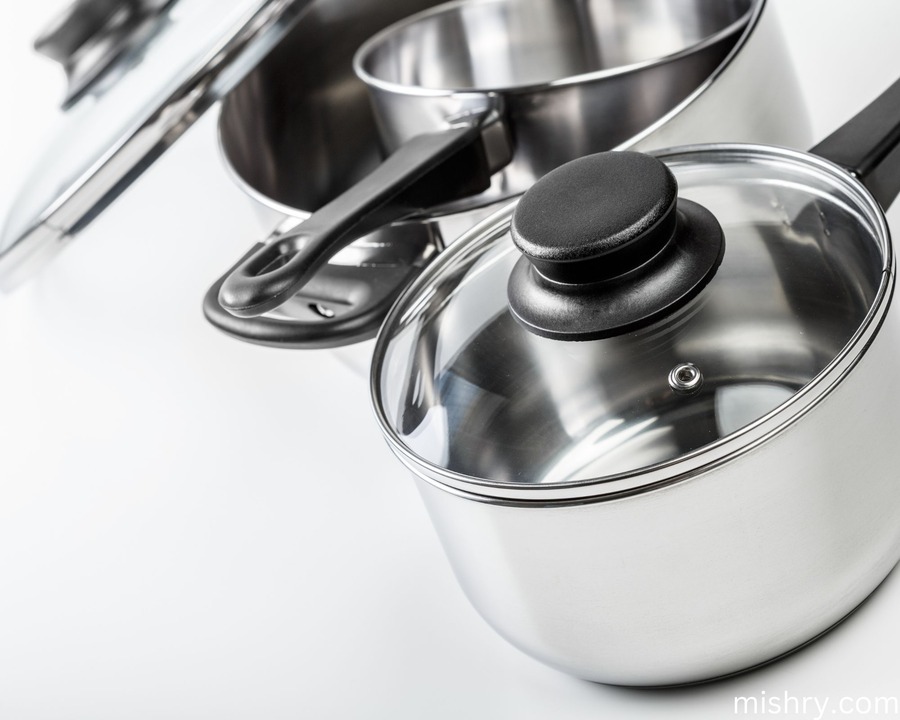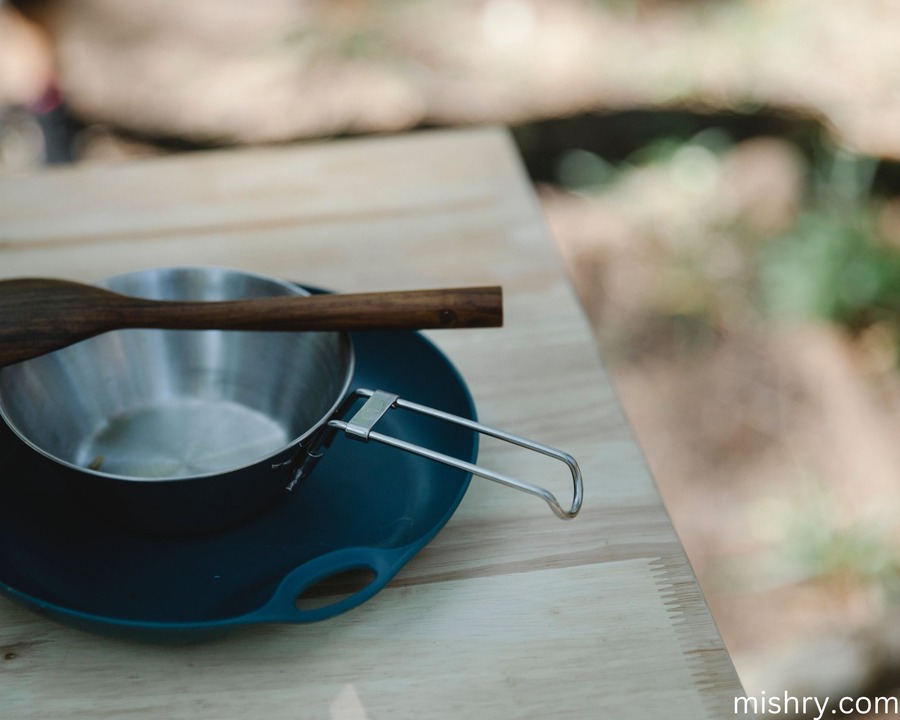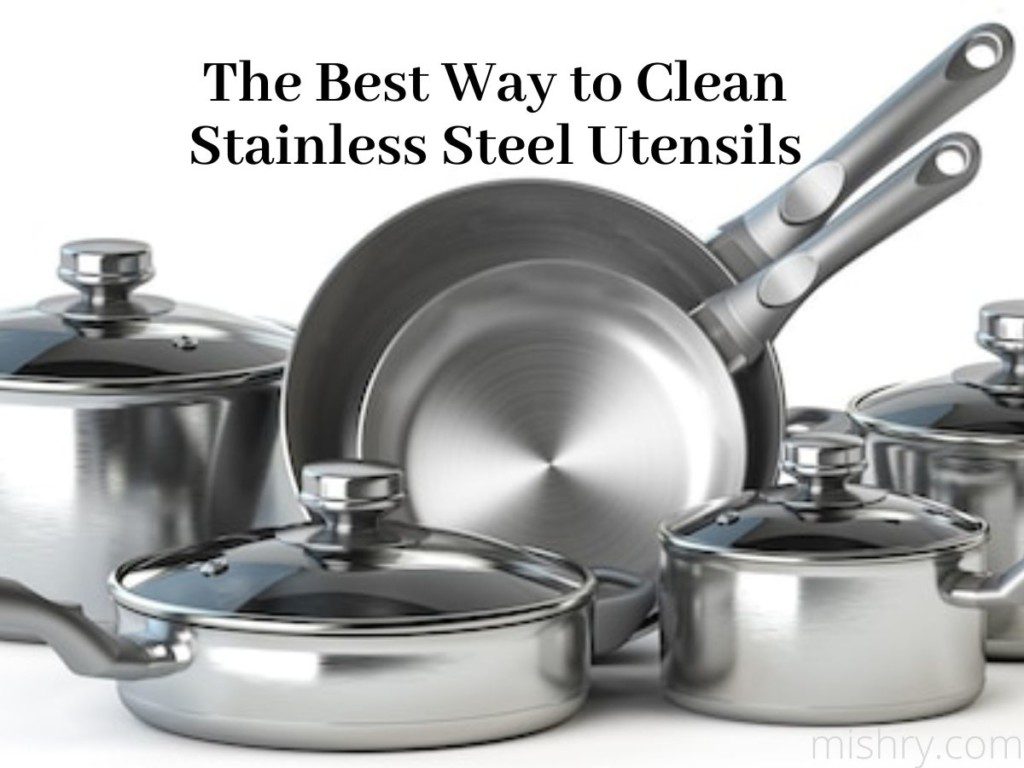Diwali, the festival of lights, brings in an atmosphere of joy, unity, and celebration.
It’s a time to illuminate not only our homes but also our hearts. What better way to celebrate than by ensuring that every nook and corner of our home shines brightly? Amidst the hustle and bustle of Diwali preparations, one often-overlooked facet is the gleaming cleanliness of our stainless steel utensils. These are an indispensable part of Indian households.
Let us look at the different methods for cleaning stainless steel kitchenware together with a few valuable tips tailored for Indian homes. Come let us embark on this cleansing journey!
Table of Contents
Why stainless steel utensils are very popular today?
Stainless steel utensils are used widely for cooking as they are one of the best cookware available. They are better than other types of cookware as they have all the advantages that one needs for a better cooking experience. Stainless steel utensils are a better choice for cooking as they are made from materials that are not toxic to human health and hygiene.
Stainless steel utensils are easy to cook with as they tolerate a higher degree of heat without doing any damage to the cookware itself. They are very adaptable as they don’t change the taste of the food that is being cooked and therefore, help in retaining the nutrient value of the food.
The Challenge of Cleaning Stainless Steel Utensils
As much fun as it is to cook with stainless steel utensils, you need to understand that they need proper maintenance. Else, they get damaged easily. Stainless steel utensils should be cleaned in such a way that the cookware doesn’t get damaged or destroyed because of negligence. These utensils are prone to various types of stains.
The challenge to clean them lies in understanding that different stains need different cleaning treatments and to use them accordingly. Here, we will be giving you a brief description of how to clean stainless steel utensils without causing any damage or defects to them.
Different Stains on Stainless Steel Utensils Need Different Solutions
For normal cleaning purposes of stainless steel utensils, warm soapy water, sponge or soft cotton cloth and dishwashing gel or bar are the necessary requirements. All a person has to do is get rid of the remnants of food from the utensil and then wash it with water and dishwashing gel or bar with the use of a sponge or soft cotton cloth.
1. Brown, rusty stains
One of the common stains that affect stainless steel utensils is brown stains. These are usually caused due to constant use, overheating and due to rusting. There is a particular way to get rid of these brown stains. To get rid of these stains, the utensil should be soaked in hot water with a few tablespoons of baking soda for a few hours. The timing that you soak the utensils for will depend on the intensity of the stains. After a few hours of soaking, the stainless steel utensil would be stain- free.
Another way to get rid of brown stains from stainless steel cookware is by using an oxalic acid cleanser. As these cleansers have chemical acids in them it is better to not leave them in the utensil for too long as they can do more permanent damage than good to the utensils while trying to get rid of temporary stains.
2. Calcium build-ups
Another type of damage that stainless steel utensils are exposed to is calcium deposits at the bottom of the utensil. This calcium deposit happens when water is boiled in these stainless steel utensils too often. The minerals in the water and the calcium get deposited at the bottom of the utensil, leaving a stain.
To get rid of this calcium deposit, one must use one third or one-fourth of vinegar along with three or four parts of water. This mixture should be made and kept aside to rest for a while to have great results on the utensil. The utensil should be washed completely with soapy water. A word of caution: Leaving stainless steel in vinegar for a long time can cause an acidic reaction and might corrode the utensil, so make sure you keep the vinegar in the stainless steel utensil only for a short while.
3. Burnt stains
Burnt food is another major reason for staining that can make a stainless steel utensil look unclean and old. These happen when food is left unattended to in the utensil for too long while cooking. It is also a very tough stain to get rid of. However, burnt food stain can be cleaned from the utensil with the help of boiling water.
All one has to do to get rid of burnt food from stainless steel utensils is to let it sit in boiling water until it cools down to room temperature. Then, you need to wash the utensils with warm soapy water, with the help of cotton cloths or a nylon scrubbing pad. The hot water helps the burnt food that is attached to the utensil to come loose, thereby helping in cleaning the vessel easier than you imagined.
4. Watermarks
Any kind of cookware that needs cleaning with the help of water will have watermarks on it, if not checked. Stainless steel utensils will show these watermarks more than any other type of cookware as they have a very shining and neat surface. To prevent the stainless steel from getting watermarks on them it is better to not leave them in moisture for so long. So, as soon as the utensil is washed it is better to wipe them with the help of a dry & soft cloth.
5. To keep it shining
Stainless steels can look dull and old when they are used for a long time. Do you want the shine and texture on these utensils to stay for a long time? Try this simple remedy for the same. Make a paste that acts as the cleaning agent with the help of baking soda and water. The texture of the paste should not be too watery; otherwise, the paste won’t work its magic. Make the paste and apply it on the inside and outside layers of the utensil. Rinse it thoroughly to get back the sheen and shine back on your utensils!
The Importance of Cleaning Stainless Steel Utensils
Stainless steel utensils are indispensable in our Indian kitchens, admired for their long-lasting strength, versatility, and charm. However, repeated usage can dull their radiance and leave ugly stains and blemishes. Cleaning these utensils properly not only restores their luster but also ensures the purity of your food. Diwali is an excellent time to polish your stainless steel equipment, resulting in a festive and sanitary kitchen environment.
The Cleaning Process
Let us look at the different ways of cleaning stainless steel utensils for retaining lasting shine and luster:
Rinsing Stage
To begin, rinse your stainless steel cutlery to remove any stray food particles. Then, fill a sink or basin halfway with warm water and add a few drops of mild dish soap. Allow your utensils to soak in this soapy solution for a few minutes. This first step helps to dislodge stubborn food remains, making the subsequent cleaning process easier.
Scrubbing
After a brief soak, use a mild microfiber cloth or a sponge to gently clean the utensil’s surface. Use a soft-bristle brush to remove stubborn stains or spots. Abrasive scouring pads should be avoided since they may cause scratches on the stainless steel surface. If your utensils have elaborate designs or carvings, pay special attention to these areas.
Using Baking Soda Magic
Baking soda might be your lifesaver when it comes to removing stubborn stains or spots. Combine baking soda and a small amount of water to make a paste. Apply this paste to the troubled areas and rub gently in a circular motion. Baking soda’s moderate abrasive properties will help lift stains without damaging the stainless steel. After that, properly rinse to complete this step.

Use White Vinegar
It’s time to break out the white vinegar to give your stainless steel kitchenware a gleaming shine. Soak a soft cloth or sponge in white vinegar and gently polish the kitchenware (if visible) following the grain. White vinegar not only helps to remove any remaining spots but also acts as a natural disinfectant. After that, thoroughly rinse the utensils with warm water to remove any vinegar residue.
Prevent Water Spots
To avoid water marks, dry your utensils immediately after cleaning them. Wipe in the direction of the grain with a clean, dry microfiber cloth. This procedure will ensure that your stainless steel utensils are spotless.

Oil Polish
Consider adding a small amount of olive oil or mineral oil to your cutlery to improve their shine and protect them. Massage the oil in a circular motion with a soft, lint-free cloth. This technique not only adds a wonderful sheen, but it also creates a protective barrier against any stains. To avoid any oily residue, make sure to wipe away any excess oil.
Tips for Indian Homes
Now that you know the best way to clean your stainless steel utensils, let’s explore some Diwali-specific tips for Indian homes:
Traditional Ornamentation
Many Indian households use stainless steel utensils with intricate patterns or religious symbols. To protect the fine details, use a gentle-bristle brush or a towel while cleaning such equipment.
Avoiding Tarnish
To keep your stainless steel cutlery from tarnishing, keep them in a cool, dry place away from direct sunlight and moisture. To absorb excess moisture in your storage cabinets, consider using silica gel packets.
Festive Adornments
Add to the festive atmosphere by adorning your gleaming stainless steel kitchenware with fresh flowers, complex rangoli designs, or vivid ribbons. These tiny improvements can take your Diwali dining experience to the next level.
Unique Culinary Tools
Diwali frequently entails the preparation of exceptional dishes. Make certain that your distinctive or family heirloom stainless steel utensils receive additional care during the cleaning process. Handle them delicately and steer clear of harsh chemicals or abrasive substances.
Stainless Steel Pooja Utensils
Follow the cleaning measures outlined above to keep the purity and immaculateness of your stainless steel utensils used in pooja or religious ceremonies. Consider saying a prayer while cleaning these utensils for added purity.
Frequently Asked Questions
Here are some interesting FAQs on how to clean stainless steel utensils
1. What is the best way to clean stainless steel cutlery?
Stainless steel cutlery must be washed with warm water and mild dishwashing soap. They must then be hung to dry and cleaned off with a soft and absorbent cloth to avoid water spots. Tough stains can be gotten rid of using natural cleaners like vinegar and lime juice.
2. How to make small stainless steel wares shiny?
The simple hack to make your stainless steel ware shine at home is to place them in a pot of boiling water. In this water add about two spoonfuls of baking soda and place some folded pieces of aluminum foil inside. Let the cutlery stay in the water while it boils. Then take them out, rinse them off as you usually would and dry them with a soft absorbent cloth.
3. How to get rid of tarnish stains out of stainless steel utensils?
To get rid of tarnish on stainless steel wares, mix vinegar in some hot water and let the mix sit on the stain for five to ten minutes. Then rinse, clean and dry the utensil.
Conclusion
Cleaning is one of the important tasks when it comes to cookware, no matter what material the cookware is made of. It is important to always keep them very clean and presentable for health and hygienic purposes. Otherwise, the stains and deposits may carry germs that may get infused in the foods we eat. This can pose a huge health risk for us; therefore, it is high time you put these simple remedies to use and get back the shine on your stainless steel utensils.
As we prepare to celebrate Diwali, let’s not forget the beauty and importance of our stainless steel utensils. With the right cleaning process, a touch of care, and the addition of some Diwali-inspired decor, you can ensure that your stainless steel utensils shine as brightly as the festival itself. Follow the steps and tips in this article to keep your utensils gleaming this Diwali.


